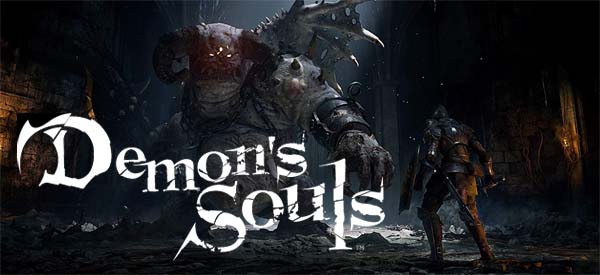
I was finally able to get a Play Station 5 for Christmas. It wasn't easy. I was on a Sony waiting list for months before finally getting the email invite to purchase one. When I booted it up on Christmas Day, I tested it out by playing a few hours of the included Astro's Playroom, while I waited for my first batch of digitally-purchased games to download and install. One of the first of those games was Bluepoint's remake of Demon's Souls.
The original Demon's Souls for PS3 is one of my favorite games ever, so my expectations for the remake were quite high. I was certain that a recreation as faithful as Bluepoint's Shadow of the Colossus remake would be good, but I also felt that Demon's Souls offered a lot more opportunity for improvement compared to the much simpler Shadow of the Colossus.
Technical improvements streamline play
Obviously, the visuals are dramatically improved. There's cloth physics, weather and particle effects, really good lighting, and all the other "next-gen" bells and whistles that one would expect. But the new hardware doesn't only allow visual improvements; it also allows for some technical improvements that do dramatically improve the gameplay experience. Perhaps the best of these technical improvements is the faster load times given by the use of a solid state hard drive.
Dying isn't as much of an inconvenience thanks to faster load times.
Quicker load times make a world of difference. Obviously, it's helpful to only have to wait a few seconds before getting back into the action after dying, rather than having to wait a whole minute to try again. But the quick loading also helps with other activities in game, such as farming. Bluepoint added the ability to warp from an archstone to any other unlocked archstone in the same world, including the one you are standing at. This allows the player to reset the current level, which can be very helpful for farming certain enemies for experience or item drops, and the loading only takes a few seconds. Barely more than sitting at a bonfire in Dark Souls!
The quick load times are also useful for things like reloading the game to refresh crystal lizards, or to trade items with Sparkly the Crow.
The smoother, 60 frames per second framerate also helps make the action feel much smoother, which might hopefully spare players from having to suffer as many deaths from mis-timing dodges and parries or from mashing a button too many times and queuing up the wrong action. The game looks and feels faster and smoother, while still maintaining the slow, weighty, and methodical pace of play of the original.
I'm less impressed by the PvP netcode. I never had problems with lag or other network issues in the original Demon's Souls on the PS3. But I rarely invaded and wasn't very good at PvP, so I might not have survived invasions long enough to realize if the original netcode was laggy or unresponsive.
I've experienced a lot of lag and other network issues during PvP.
In this remake, I'm trying to make more of a point of playing the PvP more. Not only am I engaging in more invasions with the Black Eye Stone, but I'm also reviving to human to play through most levels in the hopes of encountering some invasions from other players. I'm not being invaded a whole lot, so I'm assuming that PvP isn't very active in the remake -- or maybe being on Pacific time means all the invaders are already asleep by the time I'm able to play the game later at night. But when I do have PvP encounters, I notice a lot more lag and questionable parries and backstabs than I remember seeing in the original game.
I guess the improvement in console hardware did not lead to a smoother online play experience?
Consumables can be consumed in bulk.
The single player, however, plays very smoothly, and there are other technical refinements as well. Inventory management is simplified. Multiple consumables (such as hard soul items) can be consumed at once. Excess items can be sent directly to Stockpile Thomas from within any level. The inventory screen will show how many of a given item are in your inventory and also how many are currently stored in the Nexus. And perhaps best of all, both blacksmiths can use upgrade stones and boss souls that are still in storage! No need to grab all my upgrade stones from Stockpile Thomas before warping to Stonefang to upgrade my weapons. Though, the blacksmiths can only upgrade weapons that are in your inventory, so I do have to be sure I take those with me.
This reduces a lot of the tedium of the old inventory system, while still maintaining an absolute carry capacity for the character. I don't have to warp back to the Nexus to offload items if I become over-encumbered (and then reset the whole damn level). But I also am limited in what I can bring with me into a level. I can't carry every weapon, armor, and consumable I own into every gameplay situation, as is the case in Dark Souls. I have to prepare in advance and commit to a specific loadout, making do with what I have or what I can find within the level. This maintains the scrappier, more adventurous feel of the original game.
I am pleased, and a little surprised, that Bluepoint retained the controversial item burden mechanic.
I know that the item burden was a very unpopular feature in the original Demon's Souls, but I actually rather liked how it set such strict limits on what supplies and equipment can be carried into a level. The item burden was the one feature from the original game that I thought was the most likely to get cut in any potential remake, and I'm glad that Bluepoint found a compromise that makes the system less obnoxious, but which preserves the fundamental contribution that item burden brings to Demon's Souls' design. [More]
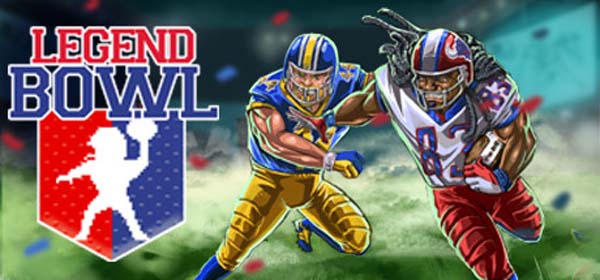
While I was neck-deep in the 2020 editions of Axis Football and Maximum Football, another small indie football game slipped under my radar. Legend Bowl was in early-access on Steam for 2 years before its 1.0 release in fall of 2021. Its retro, pixel-art graphics caused me to initially dismiss it as just another nostalgia arcade game -- another remake or knock-off of Techmo Bowl.
But YouTube comments, tweets, and a discount during a Steam sale have finally convinced me to check it out. After all, Legend Bowl was awarded "best alternative sport game of 2021" by Operation Sports, so it must be doing something right!
In those 2 years since going into early access, Legend Bowl has resisted the urge to just release an unfinished game and re-sell annual incremental upgrades to gamers, the way that almost every other sports game does -- whether it's licensed or not. Instead, Super Pixel Games is confident enough in the game that it will continue to sell based on quality and word-of-mouth. Its creator seems more than happy to treat Legend Bowl as a living product, providing regular feature updates, bug fixes, and so forth without feeling the need to charge us full-price, again, for them. The game has been successful so far, and I'm sure there will, eventually, be a sequel. But in the meantime, I am thrilled that I do not have to re-review a nearly-identical football game each fall.
I initially dismissed Legend Bowl as just another Techmo Bowl clone.
Pixel-perfect simulation?
Don't let the pixel-art fool you. Legend Bowl is not just a casual arcade football game. It can be enjoyed that way, for sure. It's simple enough to pick up and play. Nevertheless, Legend Bowl is grounded in sound, fundamental football concepts.
Perhaps the first thing that gamers will notice is the incredibly slow pace of play. The on-field action is slow, allowing the user plenty of time to react to read the opponent and react to what is going on, whether I'm running the ball, passing the ball, or playing defense.
Running is not simply a race to the edge, as in so many other football games that have poor containment and pursuit angles. Cutting back inside, against the grain, is often a great way to pick up extra yardage or break a huge play, especially if my blockers are in good positions to shield my runner's cutback. Reversing field completely is also much more viable in Legend Bowl than it is in any other football game I've played. It feels really good to cut back inside, get behind the lead blockers, and hit a narrow seam for a breakaway play.
Running out of stamina and becoming "gassed" limits the frequency of breakaway plays.
To help get those precious yards, running moves feel really good to execute. Jukes have a nice explosiveness, and are great for side-stepping around lead blockers. The stiff arm is brutally-effective -- maybe a bit too much so. Running moves use a system similar to NFL 2k, requiring the user to mash a face button to sprint, or hold it down to charge up an extra-powerful move. And all these moves consume quite a bit of stamina, which prevents them from being spammed, and requires the user to be deliberate with our use of these moves. Sprinting or using special moves will result in the player becoming "gassed", causing him to slow down considerably. Runners being caught from behind while they are gassed has proven to be an excellent way of limiting the frequency of breakaway plays. It might even be a bit too strict. [More]
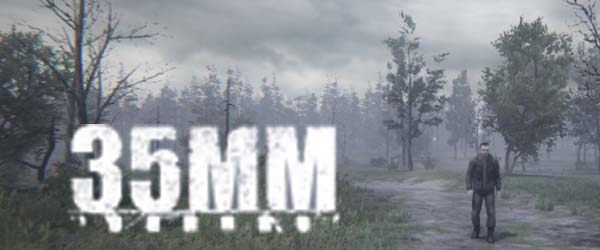
December, January, and February is usually a time when I try to make a dent in my ever-growing Steam backlog. I buy lots of games on Steam sales, and then end up not playing most of them. So when I do go into the backlog, I always try to emphasize some of the shorter, indie games in the hopes that I can power through several before the big spring game releases start rolling in. This time around, I loaded up an independent Russian game from developer Sergey Noskov, which was very well-reviewed back when I bought it in 2016. Apparently, it's going to be released on PS4 soon, so this review is sort of topical. It hasn't really held up as well as I hoped it would in the almost-5 years since its release.
Ironically, this game is set during a fictional ebola pandemic that has turned Russia into a post-apocalyptic wasteland, and I'm playing it during the ongoing COVID-19 pandemic. The game was released back in 2016, long before COVID.
35mm is a hard game to classify. It's not quite a shooter. Not quite a survival game. Not quite a horror game. And not quite a walking simulator. It straddles the line between all of these sub-genres, shifting from one to the other at the drop of a hat, but without ever feeling jarring about it. There's even a few little mini-games thrown in for good measure. As such, there's plenty of variety that helps prevent this game from ever feeling stale. Regardless of whichever genre 35mm is currently residing in, its slow pace, subdued, aesthetic design, and melancholy tone remains consistent. It is this pacing and tone that defines the game much more than any one genre.
35mm straddles the line between walking sim, shooter, survival game, and horror.
We play as a mysterious protagonist travelling across a post-apocalyptic Russia, presumably to get home to see his family. He is accompanied by a travelling companion for most of the game. The history of these characters and the relationship between them are never clearly defined, which feels like its setting up for some kind of narrative twist right from the start. Nevertheless, the companion character acts as a sort of guide through the first half of the game, telling the player where to go and what to do. Unfortunately, since these characters are never very well-developed, any potential tragedy or impact of the final twist (regardless of which ending is achieved) is severely neutered.
What's the deal with the camera?
Even though I can't quite put my finger on what genre to classify 35mm, one thing that I can definitely say is that it is not a game about photography. Given that the game is named for the type of film in a camera, and the camera is featured in the game's title screen and promotional material, I would think that the camera would feature heavily in the game. But this is not the case. The camera is never necessary. It isn't used to progress the plot. It isn't used to solve puzzles. There isn't even a recap of the photos I took at the end of the game. Photographs become a major part of the game's finale, but they aren't the pictures that I took during the course of the actual game.
The camera is not utilized, despite inspiring the title of the game and being featured on the title screen.
So I'm really puzzled as to why the game is named "35mm". It kind of set my expectations a little bit higher than they probably should be. I thought I was going to get something a little bit more artsy and creative. But instead, what I got is a pretty straightforward, linear game.
[More]
95ddc9a1-45e7-4fd5-a3a0-bc100b5752d8|0|.0
Tags:35mm, Sergey Noskov, Steam, PC, indie gaming, Russia, pandemic, ebola, post-apocalypse, camera, walking simulator, shooter, survival, horror
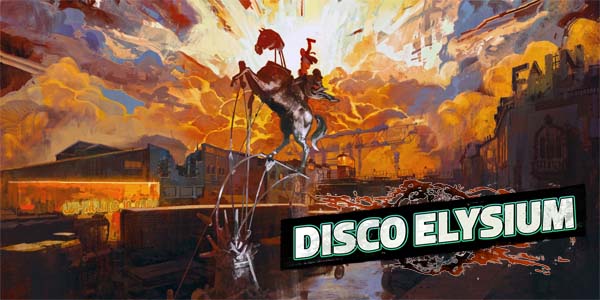
It's kind of hard to play a lot of video games while holding an infant child. It's certainly possible, but I had to accept that I was going to be less precise in my inputs whether I was holding a PlayStation controller or a keyboard and mouse. It seemed like a perfect time to try out a game that only requires a mouse to play -- a perfect time to finally try out Disco Elysium!
Disco Elysium is a unique and experimental RPG that straddles the line between RPG, point-and-click adventure, and walking sim. Most RPGs have combat of varying degrees of complexity in order to give all the various character stats and progression systems something to do. Disco Elysium completely eschews those conventions. I think I fired a gun maybe three times in my entire play time with the game (across a campaign and a half that I played prior to reviewing), and one of those gunshots was against a corpse hanging from a tree. Oh and I roundhouse kicked a a racist beefcake (you know, in order to establish my own racial superiority). Not exactly Call of Duty over here.
It may not require the twitch reflexes that many "gamer bros" expect every game to have, but games like this have been a godsend for those of us who only have one free hand to hold a mouse, because the other arm is holding a sleeping infant. It also happens to be a really good game.
I maybe fired a gun thrice, and roundhouse kicked a racist once, in 40+ hours of gameplay.
Inner dialogue
Instead of channeling character stats into gauntlets of filler combat encounters as a way of accumulating experience to improve those stats for the next combat encounters, Disco Elysium channels all of its character attributes into conversation trees. But these conversations aren't just with the other characters who I interview as part of the murder mystery plot. These conversations are also with the character's own inner monologue.
You see, the skills in Disco Elysium aren't like the skills of most other RPGs. They don't determine the character's physical strength, or agility, or skill with various weapons, or a blanket "charisma" attribute that determines if people believe your lies or are swayed by your arguments. No, instead, all of the skills of Disco Elysium represent elements of the protagonist's personality and psyche. Those skills will even pop up during dialogue and allow the character to have arguments or conversations with his own inner monologue. Each skill is like a voice in the protagonist's head, telling him what to do, or how to interpret the events he encounters. Each skill is sort of a character in its own right.
The character's skills talk to him, giving the player insight into the game world and current circumstances,
and also (sometimes flawed) advice about how to proceed.
I'm reminded of the psychosis voices of Hellblade: Senua's Sacrifice, with each voice shouting over the others trying to tell Senua what to do or telling her that she's worthless and can't do anything right. Except in Disco Elysium, the player can actually have conversations with those voices. You can talk back to them.
These skills will pop up from time to time as interjections during conversations to make observations about what is happening or to recommend specific courses or action or responses. It's also a great way of delivering exposition and ensuring that the player knows any relevant details that the character should know. But they aren't always completely reliable. Sometimes blindly following the advice of these skills can land you in trouble.
[More]
80bc8a20-3326-45b8-b069-a9aa846f0548|0|.0
Tags:Disco Elysium, Steam, PC, indie gaming, za/um studio, RPG, Estonia, point-and-click, walking simulator, skills, internal monologue, alcoholism, drug addiction, politics, union, strike, communism, fascism, nationalism, racism, sexism, liberalism, murder, mystery, police, crime
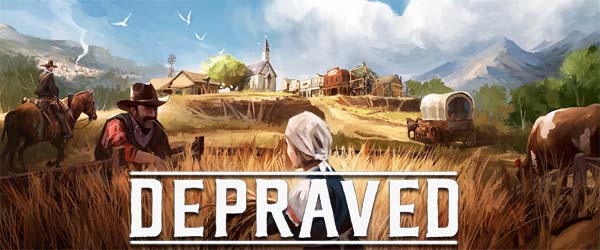
Well, the NFL season has been as good as over for us Bears fans since November, which means my interest in this year's slate of football video games is waning. That means it's time once again to dive into my back catalog of Steam games. This time, I decided to boot up Depraved, a wild west city-builder that was sitting on my wishlist for years (back when it was still in early access), and which I bought during a sale earlier this summer.
Having really enjoyed Banished many years ago, I've had my eye on other historic city builders like Depraved, Foundation, Builders of Egypt, Atomic Society, and others. Depraved is probably the closest thing to Banished that I'm likely to find. It's basically just Banished with a wild west theme instead of a medieval theme.
Depraved shares a lot in common with Banished [RIGHT].
Depraved shares a lot in common with Banished. Both games are about small, relatively isolated communities of pioneers trying to get by in a harsh, unrelenting environment. Both require stocking up food, firewood, and warm clothing in time for cold winters. And both use depleting resource reserves to force players to expand out further into the map.
Where Depraved differs from Banished is that Depraved has a much greater focus on trade. Unlike in Banished (which has the player constructing one mega-settlement), Depraved keeps settlements relatively small, but allows the player to create additional satellite towns on the map, which can each be specialized for the exploitation of specific resources or the production of specific goods. Then all those small towns can trade raw resources and manufactured goods with each other. There's also small Native American tribes that the player can trade (or war) with, as well as the occasional bandit camp popping up to harass your population and rob your bank.
The other big difference is that Banished is a much better and more polished game.
How does any of this work?
My experience with Depraved suffered greatly from the lack of a robust and informative tutorial. If I recall correctly, Banished's tutorial takes the player through a guided scenario through creating a small settlement and surviving the first winter. There's still a lot of trial-and-error in Banished, but the tutorial does a good job of covering all the basics.
Depraved, on the other hand, gave me four pop up widgets explaining the basic mechanics in text, then just let me loose on the map. There's no playable tutorial at all, and additional tutorial pop-ups are few, far between, and less informative than I would like them to be. This lead to me just sort of winging-it for my first settlement, then restarting after I had self-taught myself the basics.
This is your idea of a tutorial?!
Don't get me wrong. Depraved isn't unplayably awful. It just isn't very good at explaining itself and requires a lot of tedious micro-management. If you're fine with that, then this game will be enjoyable enough. In fact, the first few hours are thoroughly enjoyable. Depraved starts off very small and simple, with just a single settlement, a dozen or so pioneers, and a few buildings. Getting the basics of hunting for food and chopping down trees for lumber is simple enough that the player can learn on the fly. It doesn't require extensive tutorials in these early hours.
[More]
|

| 12 | | | | | | | 60 | | 11 | | | | | | | 55 | | 10 | | | | | | | 50 | | 09 | | | | | | | 45 | | 08 | | | | | | | 40 | | 07 | | | | | | | 35 | | 06 | | | | | | | 30 | | 05 | | | | | | | 25 | | 04 | | | | | | | 20 | | 03 | | | | | | | 15 | | 02 | | | | | | | 10 | | 01 | | | | | | | 05 |
|